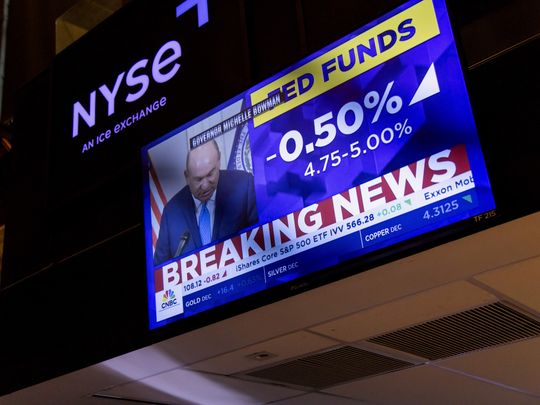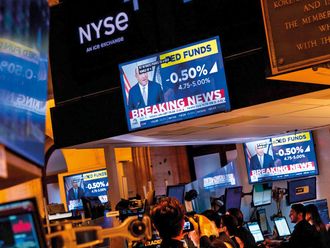
The Federal Reserve slashes interest rates by an aggressive 50 basis points from the current 23-year high of between 5.25 per cent and 5.50 per cent, in what is the first interest rate cut since Covid-19 that marks a major shift for the US economy.
Shortly after the Fed's announcement, the UAE Central Bank decided to cut the base rate applicable to the Overnight Deposit Facility (ODF) by 50 basis points – from 5.40 per cent to 4.90 per cent, effective from Thursday, September 19, 2024.
"This decision was taken following the US Federal Reserve’s announcement today to reduce the Interest Rate on Reserve Balances (IORB) by 50 basis points," the UAE Central Bank said in a statement. "The CBUAE has also decided to maintain the interest rate applicable to borrowing short-term liquidity from the CBUAE at 50 basis points above the Base Rate for all standing credit facilities."
(The Base Rate, which is anchored to the US Federal Reserve’s IORB, signals the general stance of monetary policy and provides an effective floor for overnight money market interest rates in the UAE.)
"The choice to reduce rates by 50 basis points - as opposed to a more tentative 25 bps cut - shows the FOMC are taking an aggressive approach to stimulating growth and propping up the jobs market. The Fed will likely now await the market response and upcoming data before deciding on further cuts.
"While interest rate cuts were largely priced in by markets, cuts of this extent come as somewhat of a surprise. The lower central rates will likely dampen an already sluggish US dollar in the short term. Additionally, they should also provide confidence in currently volatile equity markets. The cuts will likely allow crude oil to maintain and extend recent gains, possibly inspiring further rallies.”
Rates steady for 12 straight months
US policymakers voted 11-to-1 in favor of lowering the US central bank's benchmark lending rate to between 4.75 percent and 5.00 percent, the Fed announced in a statement. They also penciled in an additional half-point of cuts before the end of the year.
The US central bank had maintained borrowing rates steady for 12 straight months to bring down inflation in the world's largest economy. Fed chair Jerome Powell-led rate-setting panel ended its fifth policy-setting meeting for 2024 on July 31 and unanimously voted to keep the policy rate within range.
A majority of Wall Street traders anticipated a 50 basis point rate cut and a total of 100 basis points reduction by the end of the year. A half-point rate cut would signal that the US Fed is as determined to sustain healthy economic growth as it is to conquer high inflation. The move is expected to be only the first in a series of Fed rate cuts that will extend into 2025.
The decision to begin with a sharper cut caught some analysts by surprise. "In our base case the Fed cuts 25bp (basis points) but signals 100bp of cuts this year with the median 2024 'dot'", economists at Citi wrote in an investor note published ahead of the rate decision.
What does this mean for borrowers?
The Fed's decision will affect the rates at which commercial banks lend to consumers and businesses, bringing down the cost of borrowing on everything from mortgages to credit cards less than two months before the US presidential election.
The Fed said its rate-setting committee "has gained greater confidence that inflation is moving sustainably toward 2 percent, and judges that the risks to achieving its employment and inflation goals are roughly in balance." Officials also penciled in an annual headline inflation rate of 2.3 percent, slightly lower than in June.
A rate cut of any size would have supported consumers, who are feeling the pinch of interest rates at a two-decade high, lowering the cost of borrowing on everything from mortgages to car loans.
But they were highly uncertain about the size of the move, with some anticipating a small cut of a quarter of a percentage point, and others predicting the more significant half-point cut. While a larger cut would do more to push down the cost of borrowing, it also runs the risk of reigniting inflation, according to KPMG chief economist Diane Swonk.
- with inputs from AFP












